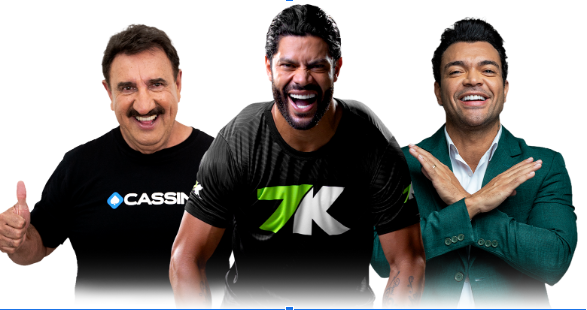
When you take all of the company’s assets and subtract the liabilities, what remains is the equity. For a company with stock shares, the equity is owned by the stockholders. The statement of equity is simply the part of a balance sheet or ledger that clearly calculates and explains the stockholders’ (or shareholders’) equity.
In other words, it is the portion of a company’s assets that would be left over if the company went bankrupt and had to liquidate all of its assets to pay off its debts. Accumulated earnings from current and past reporting periods are accounted for in shareholders’ equity. Below are some line items that would typically appear under shareholders’ equity on the balance sheet.
- For example, if a company does not have any non-equity assets, they are not required to list them on their balance sheet.
- There are many factors that go into calculating Stockholder’s equity.
- A company can either have surplus of assets after paying its debts or have a shortage of assets in paying its liabilities.
- In most cases, a company’s total assets will be listed on one side of the balance sheet and its liabilities and stockholders’ equity will be listed on the other.
- Both represent the financial claims that stakeholders have against a company.
- Although many investment decisions depend on the level of risk we want to undertake, we cannot neglect all the key components covered above.
- Learn about its different components and see examples of stockholder’s equity calculations and what they can mean.
Reducing the number of shares outstanding lowers shareholders’ equity. The $1,000,000 deducted from total stockholders’ equity represents the par value of the preferred stock as the preferred stock is not callable. The book value of common stock is rarely identical to the market value. If the market value of asset is substantially different from their respective book values, then the book value per share measure loses most of its relevance. Book value measures the value of one share of common stock based on amounts used in financial reporting. To calculate book value, divide total common stockholders’ equity by the average number of common shares outstanding. How do a company’s shareholders evaluate their equity in the business?
Want More Helpful Articles About Running A Business?
Treasury stock, or treasury shares, is the number of investor’s shares that have been repurchased ad retained by the company. Additional paid-in capital refers to any amount of money paid for shares over the stated value. So if a stock costs $1 per unit and an investor paid $1.10 per unit, the additional paid-in capital value is $0.10 per unit. Outstanding shares are the amount of stock that has been sold to investors and hasn’t been repurchased by the company. In essence, this value is the total amount of stock the company has issued. Shareholder liabilities are incurred in the process of issuing equity and include items such as dividends payable. Operating liabilities are incurred in the normal course of business and include items such as accounts payable and taxes payable.

This would appear on the balance sheet as an increase in stockholder’s equity. In other words, shareholders will be paid dividends before common stockholders are. In terms of payment and liquidation order, bondholders are ahead of preferred shareholders, who in turn are ahead of common shareholders. Share Capital refers to amounts received by the reporting company from transactions with shareholders. Companies can generally issue either common shares or preferred shares.
Remember that what a company’s shares are actually worth is whatever a willing buyer will pay for them. Stockholders’ equity is the money that would be left if a company were to sell all of its assets and pay off all its debts. It is the net worth of a company and can also be called “owners’ equity” or “shareholders’ equity.” It can be found on a firm’s balance sheet and financial statements, along with data on assets and liabilities. The balance sheet is one of the three most important financial statements for a business, along with the income statement and the cash flow statement. The balance sheet shows a company’s assets, liabilities, and shareholders’ equity at a specific point in time.
For example, if the business decides to liquidate, preferred stockholders will get paid before common stockholders do. However, common stockholders tend to have voting rights, whereas preferred stockholders usually don’t. Retained earnings is the amount of money left in the business after the shareholders are paid dividends. With dividend stocks, shareholders are entitled to a percentage of the company’s profits.
Treasury Shares
However, when SE is negative, this indicates that debts outweigh assets. If the shareholders’ equity remains negative over time, the company could be facing insolvency. The total number of outstanding shares of a company can change when a company issues new shares or repurchases existing shares. It should be noted that the value of common and preferred shares is recorded at par value on the balance sheet, so the amount shown doesn’t necessarily equal or approximate the company’s market value.
- Calculating stockholders equity can be a useful for determining the success of a company.
- Maggie goes to her favorite search engine, Yagoog, and types in MNO Corporation.
- She has been an investor, entrepreneur, and advisor for more than 25 years.
- However, stockholders’ equity doesn’t provide a complete picture of a company’s performance and how effectively it is managing and creating stockholders’ equity.
- Another benefit of share buybacks is that such corporate actions can send out a positive signal to the market, much like dividends, without the obligation to maintain the repurchases (e.g. a one-time repurchase).
- Throughout this series of financial statements, you can download the Excel template below for free to see how Bob’s Donut Shoppe uses financial statements to evaluate the performance of his business.
It can also reveal whether you have enough equity in the business to get through a downturn, such as the one resulting from the COVID-19 pandemic. The statement of shareholder equity shows whether you are on sound enough footing to borrow from a bank, if there’s value in selling the business and whether it makes sense for investors to contribute.
Purchase Of Treasury Stock
The board members can then keep track of how much money is due to be paid to shareholders as dividends. For example, if a company is showing strong growth in the statement of stockholders’ equity, then that shows that they are investing in new projects and increasing their shareholder’s equity. In short, the Equity portion of the accounting equation is the amount left over after liabilities are deducted from assets and represents the residual value of assets minus liabilities. Owner’s or stockholders’ equity also reports the amounts invested into the company by the owners plus the cumulative net income of the company that has not been withdrawn or distributed to the owners. When there are shareholders this distribution comes in the form of dividends. Let’s look at the expanded accounting equation to clarify what constitutes Owners’ or Shareholders’ Equity before we examine its presentation on the Balance Sheet and Statement of Owners’ Equity. Equity is the shareholders’ “stake” in the company as measured by accounting rules.

This sheet lists all a company’s assets and liabilities, totaled at the bottom of each section. Since the value of a company’s stock cannot go below zero, other components such as unrealized losses would have to be negative. If a company’s shareholders’ equity were to become negative, it would indicate insolvency. Accumulated earnings are the earnings from previous years that are retained by the company. Each year, the company’s net profit adds to accumulated earnings, while any dividend paid to shareholders reduces accumulated earnings.
What Happens When There Is Not Enough Cash Flow Or Assets On Hand To Cover Liabilities?
For companies that aren’t public, the statement of stockholder equity is often considered the owner’s equity. In an initial public offering, a set amount of stock is sold for a set price. After that, the stock can be traded freely, but the money that is paid directly to the company for that initial offering is the share capital. Another way to increase stockholder’s equity is to determine any assets your company owns that have depreciated over time. Treasury stock encompasses the outstanding shares of stock that a company has repurchased from stockholders. A negative number could indicate your company’s assets are less than its liabilities. In some cases, this could mean your company might be facing potential bankruptcy.
Earlier, we were provided with the beginning of period balance of $500,000. However, the issuance price of equity typically exceeds the par value, often by a substantial margin. The Best Online Payroll Services of 2022 Our team has compared the best online payroll services… Stockholders’ equity has a statement of stockholders equity few components, each with its own value and meaning. Harold Averkamp has worked as a university accounting instructor, accountant, and consultant for more than 25 years. Khadija Khartit is a strategy, investment, and funding expert, and an educator of fintech and strategic finance in top universities.
Components Of Stockholders’ Equity
Helstrom attended Southern Illinois University at Carbondale and has her Bachelor of Science in accounting. Hearst Newspapers participates in various affiliate marketing programs, which means we may get paid commissions on editorially chosen products purchased through our links to retailer sites. The figure below is an example of how Equity is reported on the Balance Sheet of a corporation when stock has been issued. As you can see, Equity includes several components regardless of the type of business. Acquisition Shares means each class of shares of beneficial interest of an Acquiring Fund to be issued to the corresponding Target Fund in a reorganization under this Agreement.
- Low or declining stockholders’ equity could indicate a weak business, and/or a dependency on debt financing.
- Contributed Capital – This is the value you contributed to the company.
- Shareholder liabilities are incurred in the process of issuing equity and include items such as dividends payable.
- Stockholders’ equity is the value of a business’s assets that remain after subtracting liabilities.
- Non-current LiabilitiesThe most common examples of Non-Current Liabilities are debentures, bond payables, deferred tax liabilities etc.
- As you can see, shareholders’ equity is calculated by subtracting a company’s liabilities from its assets.
Negative stockholders’ equity occurs when a company’s total liabilities are more than its total assets. For example, if a company with $10 million in total assets and $15 million in total liabilities has negative stockholders’ equity, then it can be said that the business is insolvent with negative equity of $5 million. The heading on the statement of shareholder equity should have the company name, the title of the statement, and the accounting period to prevent any confusion later when you are searching for these financial statements. A statement of shareholder equity is useful for gauging how well the business owner is running the business. If stockholder equity declines from one accounting period to the next, it’s a telltale sign that the business owner is doing something wrong.
Companies in the growth phase of their business can use retained earnings to invest in their business for expansion or boost productivity. Also, companies that grow their retained earnings are often less reliant on debt and better positioned to absorb unexpected losses. The balance sheet is a financial statement that lists the assets, liabilities, and stockholders’ equity accounts of a business at a specific point in time.
Retained earnings is the cumulative amount of profits and losses generated by the business, less any distributions to shareholders. Equity typically refers to shareholders’ equity, which represents the residual value to shareholders after debts and liabilities have been settled. It means they are making money and managing their finances correctly. If the equity value is negative, then its a bad sign, and the company is mismanaging resources.
Shareholder or stockholders’ equity is one simple calculation to pay attention to. Here’s what you need to know about how to calculate stockholders’ equity. A Statement of Stockholders’ Equity is a required financial document issued by a company as part of its balance sheet that reports changes in the https://www.bookstime.com/ value of stockholders’ equity in a company during a year. The statement provides shareholders with a summary view of how the company is doing. It’s also used by outside parties such as lenders who want to know if the company is maintaining minimum equity levels and meeting its debt obligations.
In addition to these, debts and expenditures factor in to the calculation, as well as any debts the company as accrued. Bob also decides to pay himself a salary of $ 500, which will again reduce the capital of the business.
For many companies, paid-in capital is a primary source of stockholders’ equity. Paid-in capital is the money companies bring in by issuing stock to the public.
Bob bought $50,000 of capital stock of the business by investing it in cash. Bob started off his business with nothing in capital or retained earnings in the company. This simple equation does a lot in demonstrating that shareholder’s equity is the residual value of assets minus liabilities. Throughout this series of financial statements, you can download the Excel template below for free to see how Bob’s Donut Shoppe uses financial statements to evaluate the performance of his business. SpinCo Common Stock means the common stock, par value $0.01 per share, of SpinCo. Newco Common Stock means the common stock, par value $.01 per share, of Newco. Holdings Common Stock means the common stock of Holdings, par value $.01 per share.
She has been an investor, entrepreneur, and advisor for more than 25 years. Investopedia requires writers to use primary sources to support their work.
Shareholders equity refers to the residual claims shareholders of a company can make after all liabilities have been settled. Ask questions and participate in discussions as our trainers teach you how to read and understand your financial statements and financial position.
By paying out large dividends, a company can minimize its takes due. Keeping net income to reinvest into the business also has tax implications.

 Moda2 semanas ago
Moda2 semanas ago
 Famosos2 semanas ago
Famosos2 semanas ago
 Famosos2 semanas ago
Famosos2 semanas ago
 Famosos2 semanas ago
Famosos2 semanas ago
 Famosos1 semana ago
Famosos1 semana ago
 Moda2 semanas ago
Moda2 semanas ago
 Moda2 semanas ago
Moda2 semanas ago
 Moda2 semanas ago
Moda2 semanas ago










